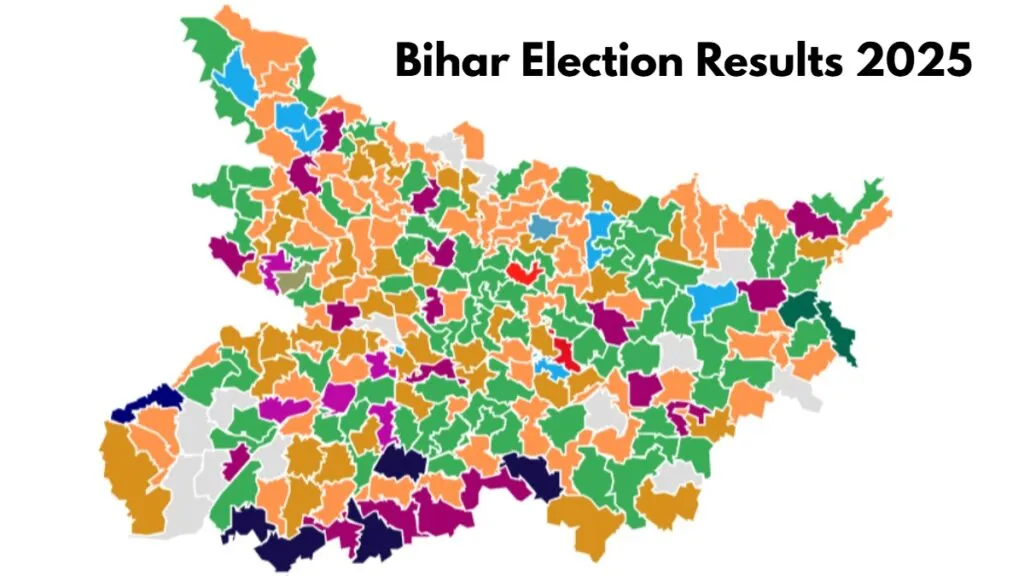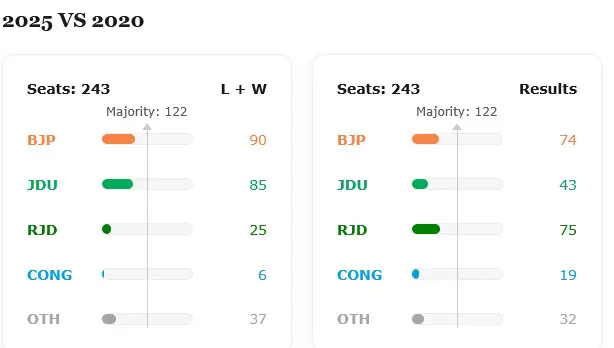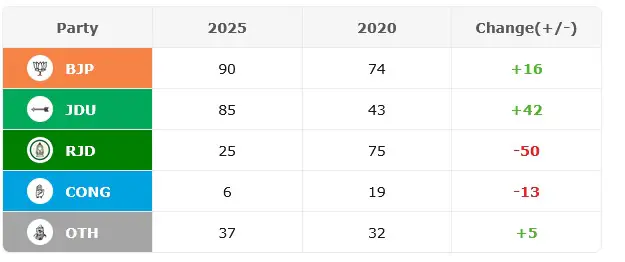
The 2025 Bihar Assembly elections delivered a decisive mandate to the National Democratic Alliance (NDA), led by Nitish Kumar. In a 243-member assembly, the NDA crossed the 200-seat mark, securing roughly 202 seats and delivering a sweeping victory. Within the alliance, the Bharatiya Janata Party (BJP) narrowly missed its best ever tally in Bihar, winning about 90 seats (near its 91-seat high point of 2010). At the same time, the Janata Dal (United) (JD(U)) nearly doubled its previous strength, rising from 45 to 84 seats.
Meanwhile, the Lok Janshakti Party (Ram Vilas) (LJP-RV) under Chirag Paswan emerged as one of the biggest winners among the NDA’s smaller constituents, winning 19 of the 29 seats it contested. Smaller allies such as Hindustani Awam Morcha (HAM) and Rashtriya Lok Samta Party (RLSP) also made in-roads, claiming five and four seats respectively while contesting just six each.
In contrast, the opposition Mahagathbandhan faced a near-decimation: it mustered only about 35 seats in total, signalling a sharp reversal of fortunes. The verdict reaffirms the NDA’s dominance in Bihar, underscores Nitish Kumar’s enduring pull, and highlights the BJP’s strong second wind. It also raises fresh questions about the viability of the opposition alliance in the state’s rapidly shifting political landscape.



In the 2020 assembly elections, the BJP contested 110 seats and won 74, securing 19.8% of the vote share. The JD(U) contested 115 seats and won 43, with a 15.7% vote share, while the Hindustani Awam Morcha (Secular) won four of the seven seats it contested, gaining 0.9% of the total vote share.
In contrast, the 2015 elections saw a sweeping victory for the Mahagathbandhan (Grand Alliance) — a coalition of JD(U), RJD, and Congress — which captured 178 of 243 seats. The RJD emerged as the largest party with 80 seats, followed by JD(U) with 71 and Congress with 27. The BJP-led NDA managed only 58 seats, with the BJP itself securing 53, marking a major setback in rural Bihar.
